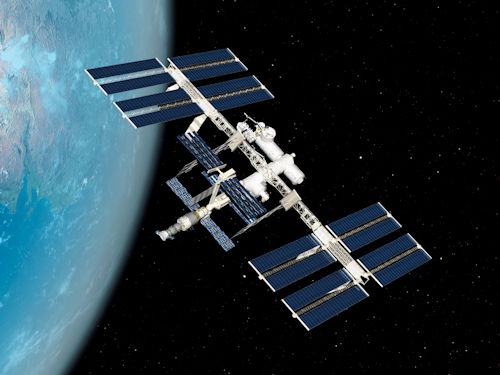Space Week
Space Week runs from October 4th to October 10th each year.
The date commemorates the launch of the first artificial satellite.
Russia’s Sputnik 1 blasted off from Earth on October 4th, 1957.
/GettyImages-151541875-adcfc13d221e40e4946f571b57180f3d.jpg)
Sputnik 1
The theme for Space Week 2025 is ‘Living in Space’.
It’s a great time to book a Wonderdome visit to your school or event.
Our presenters will take you into space in your own school hall!
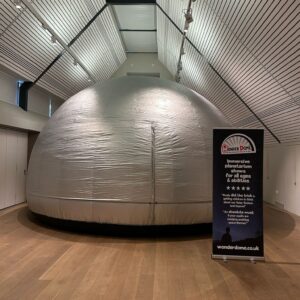
Wonderdome, the UK’s premier mobile planetarium.
Our two October blogs will explore Space Week’s theme.
In Part 1 we’ll see why astronauts float around in space.
We’ll find out how astronauts breathe, eat and drink.
These are the basics to survive in Space.
Then in Part 2 we’ll look at work, waste, sleep and the fun of living in Space.
Just living
Think what you have done today in your life.
Breathing, moving, eating, drinking, going to the toilet etc.
That’s everyday living on Earth.
But we’re not living in a metal box surrounded by the cold, airless expanse of Space.
Astronauts are living in that environment.
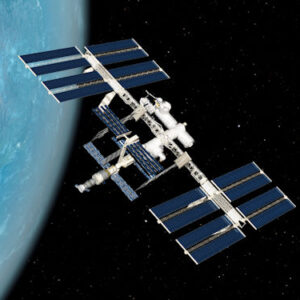
International Space Station cupola. NASA
They live inside a spacecraft.
Outside the craft, outside a thin metal wall, lies certain death.
International Space Station
So how do humans survive in Space?
To answer that question, we’ll visit the International Space Station, ISS.

International Space Station. NASA
ISS, a Home in Space
First some essential facts about the International Space Station.
- Used by astronauts from 15 countries
- First astronauts – year 2000
- Usual number of astronauts – 6
- Orbit speed – 25,000 km / hour (17,500 mph)
- Time to orbit Earth – 90 minutes
- Number of orbits per day – 16
- Length – 109 metres
- Size – as big as a football pitch
- Power – electricity from solar panels
- 16 cabins
- Science labs, 6 bedrooms, large bay window (the cupola).
Astronaut home
On board ISS, astronauts live for months at a time.
They do lots of research and experiments that can only be done in space.
The station provides everything to keep the astronauts alive.
They can do almost everything that we take for granted on Earth.
But they often have to do it in a slightly different way.
It’s life, Jim, but not quite as we know it.
Weightless!
Up in Space, astronauts don’t move about like us.
We walk around, held to Earth by gravity.
Up in Space, astronauts just float.
It’s like there is no gravity.

Microgravity on ISS. NASA
However there is gravity in Space. Gravity holds the Space Station in orbit around the earth.
The ISS is moving at 17,500 mph.
If there were no gravity, it would hurtle away into space.
So why are things weightless in Space?
The speed of ISS balances the force of gravity.
The station orbits the Earth.
So the ISS and everything inside it, is falling around the Earth all the time.
Astronauts are falling but never getting anywhere.
In this free fall, everything is weightless.
Astronauts often call it microgravity.
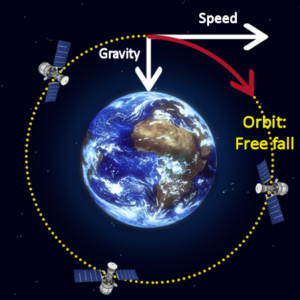
ISS forces and orbit. ESA
Weightlessness causes most astronauts to feel sick at first.
But they get use to it and then it can be fun.
Although it’s fun, microgravity causes problems for living in Space, as we’ll see.
Breathing
Oxygen supply
Breathing keeps us alive. It provides oxygen for our bodies to use.
In space there is no air so the station makes its own.
The air on the ISS is the same as on Earth, 21% oxygen, 78% nitrogen.
Oxygen is the gas we need to stay alive. We use it up each time we breathe.
So oxygen has to be made all the time on ISS.
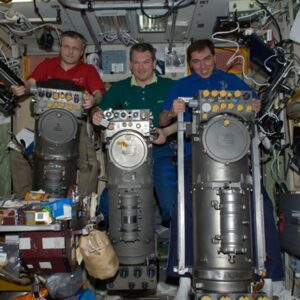
Russian Oxygen machines on ISS. NASA
It’s made by passing electricity through water, H2O.
The process is called electrolysis.
The electric current splits the H2O into hydrogen and oxygen.
The oxygen goes into the air and the astronauts can carry on breathing.
The explosive hydrogen is vented into space, though sometimes it can be made use of.
Oxygen backup
Oxygen is so important that astronauts have extra supplies to be used in emergencies.
There are gas cylinders filled with extra oxygen.
Astronauts also have small emergency packs that make oxygen from chemicals.
The pack gives enough oxygen to keep an astronaut alive for one day.
Carbon Dioxide removal
When we breathe we use up oxygen and breathe out carbon dioxide gas, CO2.
If that goes on for a long time, the amount of carbon dioxide builds up.
That’s not good, because CO2 is a suffocating gas.
On ISS the carbon dioxide is removed by chemicals.
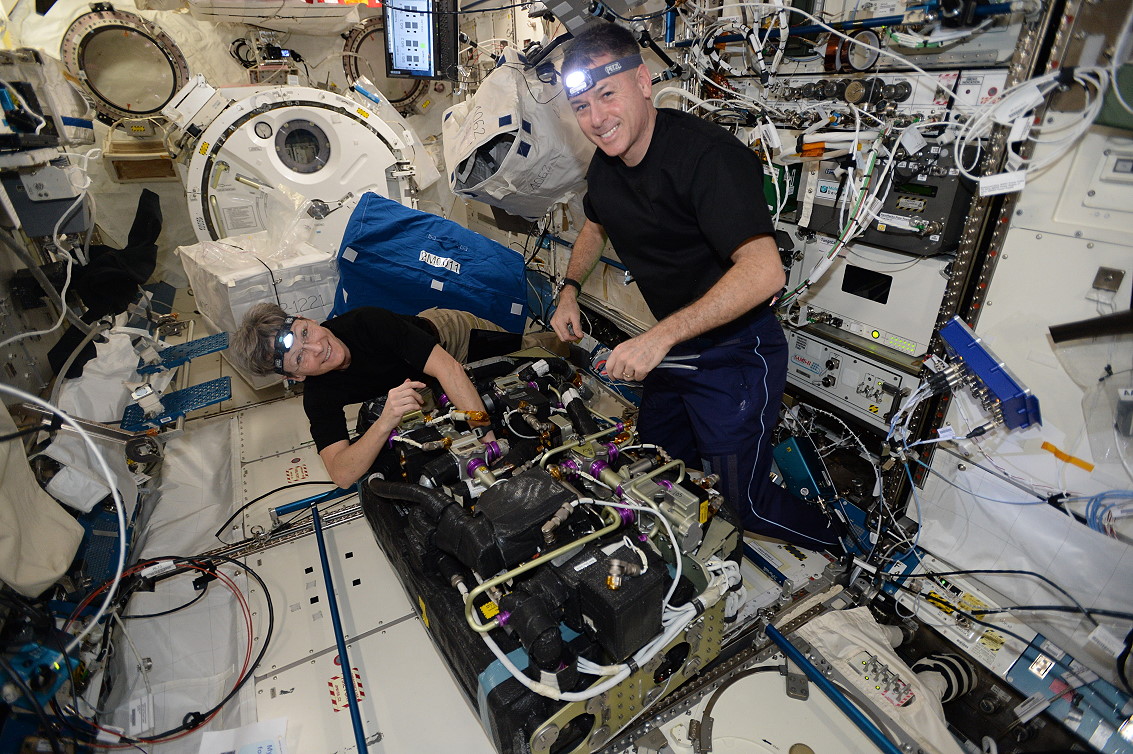
Carbon dioxide removal assembly on ISS. NASA
When astronauts breathe out, the CO2 can build up around their heads.
That could eventually suffocate them.
So the air on ISS is blown through in a constant current.
That takes the CO2 away.
Drinking
A second life essential is water.
We just turn a tap – and there it is, water, liquid life.
It’s not like that on board the Space Station.
Delivery
Water is very heavy so there’s a limit to how much water rockets can carry into space.
On ISS, water is delivered in large plastic bags weighing 40 kilograms.

Russian water delivery bag. NASA
Deliveries by rocket come every 3 to 6 months.
Sending rockets to the station is expensive so taking water costs a lot of money.
It works out that a bottle of water on ISS costs about $10,000 – that’s £7,000!
Wow, that is expensive!
Recycling
To keep costs down and make sure the supply keeps going, water is recycled.
ISS has an amazing Water Recovery System, WRS.
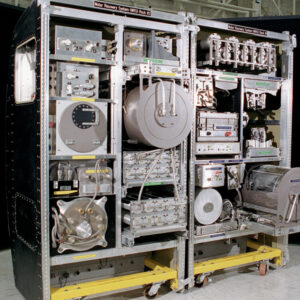
ISS Water Recovery System. NASA
It collects water from the air in the cabin.
This water is breathed or sweated out by the astronauts.
WRS also collects water from washing and brushing teeth.
Another system collects water from urine.
Yes, even astronauts’ wee is recycled, as we’ll see in Part 2.
The water recovery system is so good that 98% of water used on ISS is recycled into pure water that can be used again.
So for every 100 litres of water used by astronauts, 98 litres is recycled to be used again.
Drinks
Drinking plain water gets a bit boring so astronauts have flavoured drinks.
Because everything is weightless, cups and glasses are no use. The drink would just float away.
Astronauts drink out of plastic bags.

The bag contains powdered flavours – tea, coffee, orange, blackcurrant, etc.
The astronaut just puts hot or cold water into the bag then squishes the bag to mix the drink.
To drink, they use a straw.
![]()
Fizzy drinks are not allowed.
Inside the stomach there’s no gravity to separate the gas and liquid.
So any astronaut who burps will be sick.
No alcohol is allowed either.
Alcohol dulls the senses and astronauts have to be alert all the time.
Eating
Food is another essential for living.
Astronauts can’t just go to the shops to buy food.
Everything they eat is brought up by supply rockets.
When new crews arrive, they bring food with them.
Fresh food, like fruit and vegetables, comes with each arrival.
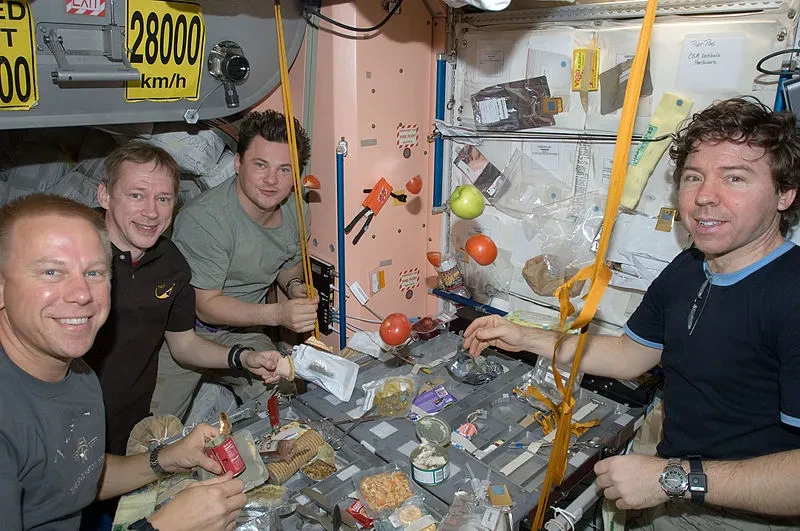
Meal time on ISS. NASA
There are no fridges on ISS so fresh food has to be eaten soon after it arrives.
Much of the food eaten on ISS is dried food.
ISS dining table. NASA
Freeze-dried food lasts for months with long use-by dates.
It is also lightweight so a lot of food can be taken by each rocket launch.
The dried food comes in plastic packs.
Astronauts then simply add hot water to make a hot meal.
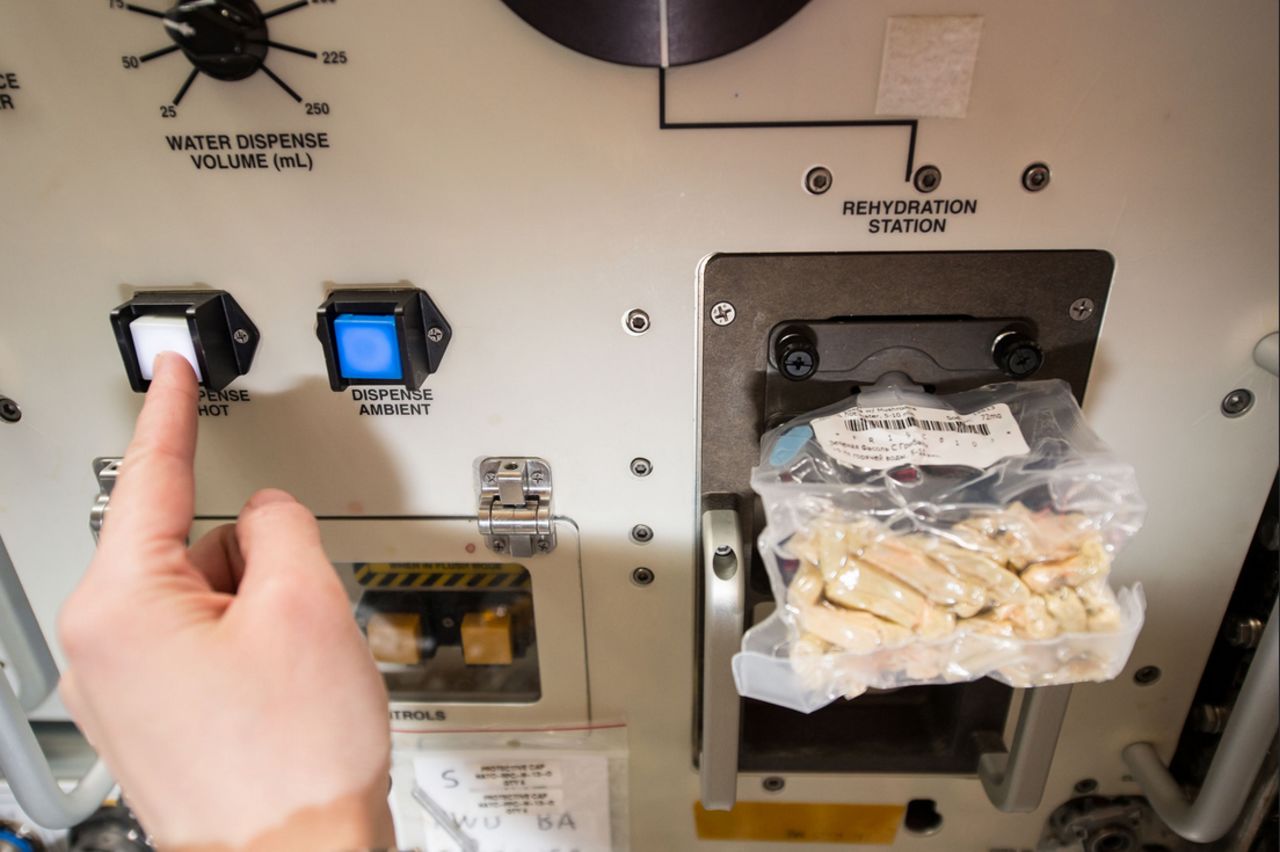
Water station on ISS. NASA
There’s a choice of over 100 types of food on ISS
Astronauts from different countries like food from where they live.
There are no plates or dishes on ISS because there is nowhere to wash them.
Water in a sink would just float away.
They have knives, forks and spoons and scissors to cut open the plastic food bags.
All these are fastened to the table with string to stop them floating away.
You won’t find any bread on the space station.
It makes too many crumbs that would float around.
Instead, astronauts use tortillas.
Here’s a space cheeseburger, made with a tortilla!
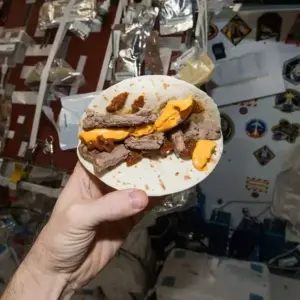
Space cheeeburger on ISS. NASA
In Part 2
In Part 1, we’ve seen how astronauts are able to breathe, eat and drink.
Coming up in Part 2, we’ll explore more aspects of life on the ISS.
We’ll look at space toilets, washing, exercise, clothes – and the fun of living in Space.
See you soon!
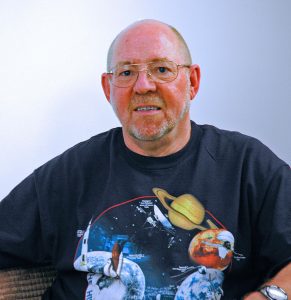
The author: Dennis Ashton, MBE, is a Fellow of the Royal Astronomical Society and a Wonderdome presenter.
In 2024, Dennis received the Special Contribution award from the British Association of Planetaria.
In 2025 he was made a Member of the Order of the British Empire for over 50 years work in Astronomy Education.
Wonderdome now has 15 presenters, making us the largest – and best – mobile planetarium organisation in the UK.
Would you like more Astronomy news?
Do you want to hear about our upcoming public events?
Follow Wonderdome Portable Planetarium on Twitter / X and Facebook.
Or you can go at our website wonderdome.co.uk.


